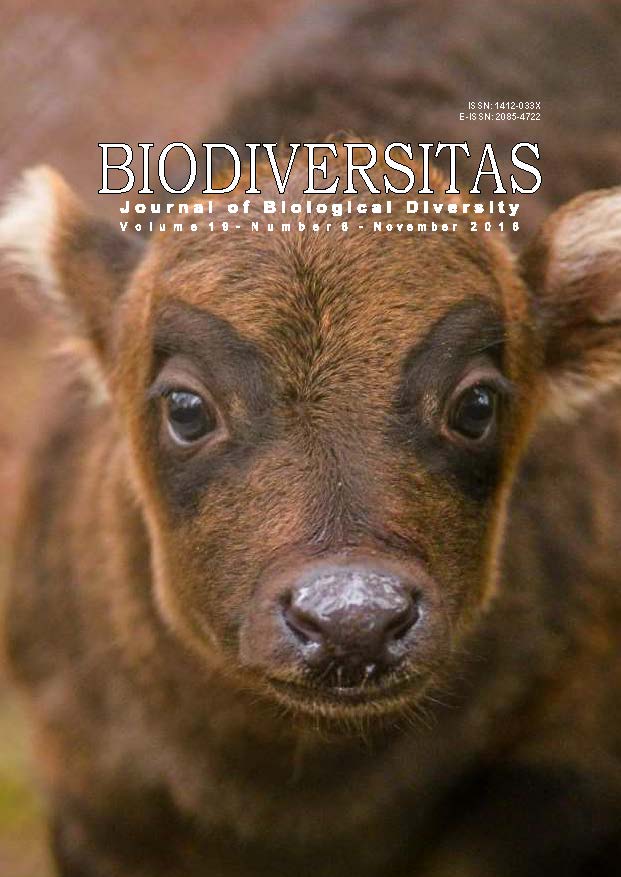Diversity of uropathogenic Escherichia coli lytic phage from Cisadane River, West Java, Indonesia based on morphology and protein molecular weight characteristics
##plugins.themes.bootstrap3.article.main##
Abstract
Sufa HI, Budiarti S, Rusmana I. 2018. Diversity of uropathogenic Escherichia coli lytic phage from Cisadane River, West Java, Indonesia based on morphology and protein molecular weight characteristics. Biodiversitas 19: 2359-2364. The aimed of this study was to identify, isolate and characterized the lytic phage diversity which had a potential in reducing uropathogenic Escherichia coli (UPEC), antibiotic resistant-pathogenic bacteria infecting urinary tract from Cisadane river based on the morphology and protein molecule weight. To the best of our knowledge, this study has not yet been reported in Indonesia. Two novel lytic phages of UPEC, FU1, and FU3 were isolated from Cisadane River, Indonesia. Both of lytic phages were more closely related to Podoviridae, which had icosahedral capsid in 47.2 nm and 40 nm diameter length, respectively and short-noncontractile tail (< 40 nm). The FU1 and FU3 had different protein molecular weight ranges between 10-76 kDa and 8-120 kDa, respectively. In addition, the bacteriolytic activity of FU3 (1.6 ´ 107 PFU/mL) was able to reduce UPEC (1.7 ´ 107 CFU/mL) to become lower than the limitation value of infection (< 105 CFU/mL) in only 25 h of incubation. A better effect of FU3 phage in decreasing UPEC population in vitro is expected to be one of the further alternative biocontrol agents to reduce the abundance of UPEC population which grows in urinary tract or contaminates river water.
